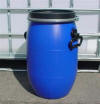| Muby Chemicals and a few more manufacturing units are in Mubychem Group, the pioneer manufacturer of Zinc Chloride, Calcium Chloride, Potassium Chloride, Sodium Acetate, Sodium Thiosulphate, Ammonium Chloride, & Pharmaceutical Chemicals in India since 1976. Currently we have manufacturing facilities spread across Western India. No other vendor in the world knows Potassium Chloride any better than we do. We are exporters to all the countries across the globe. | |
(FDA) GMP GLP Approved, ISO-9001 Certificate, "REACH" registered, ISO-22000, Kosher Certified, Halal Certified, HACCP |
Potassium Chloride USP, FCC Food Grade Manufacturers, Uses
CAS Number 7447-40-7
Potassium Chloride Manufacturers
Potassium Chloride BP IP Manufacturers
Potassium Chloride ACS AR Grade Manufacturers
Potassium Chloride USP FCC Food Grade Manufacturers
Potassium Chloride USP Specifications
Potassium Chloride
USP
KCl 74.55
Assay— Potassium
Chloride contains not less than 99.0 percent and not more than 100.5 percent
of KCl, calculated on the dried basis.
Packaging and storage— Preserve in well-closed containers.
Labeling— Where
intended for use in hem dialysis, it is so labeled.
Identification— A
solution (1 in 20) responds to the tests for Potassium and for Chloride.
Acidity or alkalinity— To a solution of 5.0 g in 50 mL of carbon dioxide–free water add 3 drops
of phenolphthalein TS: no pink color is produced. Then add 0.30 mL of 0.020
N sodium hydroxide: a pink color is produced.
Loss on drying — Dry it at 105 for 2 hours: it loses not more than 1.0% of its
weight.
Iodide or bromide—
IODIDE—
Standard stock
solution— Transfer an accurately weighed quantity, about 41 mg, of
potassium iodide to a 25-mL volumetric flask. Dissolve in and dilute with
water to volume, and mix.
Standard solution— Dilute 1.0 mL of Standard stock solution
with water to 25 mL, and
mix. Dilute 2.0 mL of this solution with water to 8 mL, and proceed as
directed for Test solution beginning with “Add 1 mL each of
chloroform”.
Test solution— Dissolve 2 g in 8 mL of water. Add 1 mL each of
chloroform and diluted hydrochloric acid, then add 2 drops of a chloramine T
solution (0.1 in 100), and shake gently. The violet color of the chloroform
layer is not darker than that of a concomitantly prepared Standard
solution: the limit is 0.005%.
BROMIDE—
Standard solution— Transfer an accurately weighed quantity, about 32 mg, of sodium bromide to a
25-mL volumetric flask. Dissolve in and dilute with water to volume, and
mix. Dilute 2.0 mL of this solution with water to 8 mL, and proceed as
directed for Test solution beginning with “Add 1 mL each of
chloroform”.
Test solution— Dissolve 2 g in 8 mL of water. Add 1 mL each of
chloroform and diluted hydrochloric acid, then add 5 drops of a chloramine T
solution (1 in 100), and shake gently. The brown color of the chloroform
layer is not darker than that of a concomitantly prepared Standard
solution: the limit is 0.1%.
Aluminum— where it
is labeled as intended for use in hem dialysis— Proceed as directed using
2.0 g of Potassium Chloride to prepare the Test Preparation: the
limit is 1 µg per g.
Calcium and magnesium—
To 20 mL of a solution (1 in 100) add 2 mL each of 6 N ammonium
hydroxide, ammonium oxalate TS, and dibasic sodium phosphate TS: no
turbidity is produced within 5 minutes.
Sodium— A solution
(1 in 20), tested on a platinum wire, does not impart a pronounced yellow color to a non-luminous
flame.
Heavy metals— Dissolve 2.0 g in 25 mL of water: the limit is 0.001%.
Organic volatile
impurities: meets the requirements.
Potassium Chloride FCC US Food Chemical Codex
Potassium Chloride
KCl 74.55
Formula wt 74.55
Function: Nutrient; gelling agent; salt substitute; yeast food.
REQUIREMENTS:
Identification:
A 1:20 aqueous solution gives positive tests for Potassium and for Chloride.
Assay: Not less than
99.0% of KCl after drying; and not less than 98.0% of KCl after drying when
a sample contains added substance.
Acidity or Alkalinity: A sample containing no added substance passes test.
Heavy Metals (as
Pb): Not more than 5 mg/kg.
Iodide and/or Bromide: Passes test.
Loss on Drying: Not
more than 1.0%.
Sodium: Passes test.
Potassium Chloride USP FCC Food Grade manufacturers:
MUBY CHEMICALS
S-8, SARIFA MANSION, 2ND FLANK ROAD,
CHINCHBUNDER, MUMBAI 400009, INDIA
TEL: (OFFICE)
91-22-23770100, 23726950, 23774610, 23723564. FAX: 91-22-23728264
Email: info@mubychem.com
USA & Canadian Customers may Call 773-829-5811

Copyright
and Usual
Disclaimer
is Applicable
Last
updated:
28.02.22
Exporters to USA Canada UAE Europe South Africa Tanzania Kenya Uganda Egypt Nigeria Turkey Brazil Chile Argentina Dubai Cameroon Guatemala Mexico Peru ---
I shall pass through this world, but once. If therefore, there is any good that I can do, or if there is any favour that I can show to a fellow human being, let me do it now. Let me not defer or neglect it. For I shall not tread this way again.



